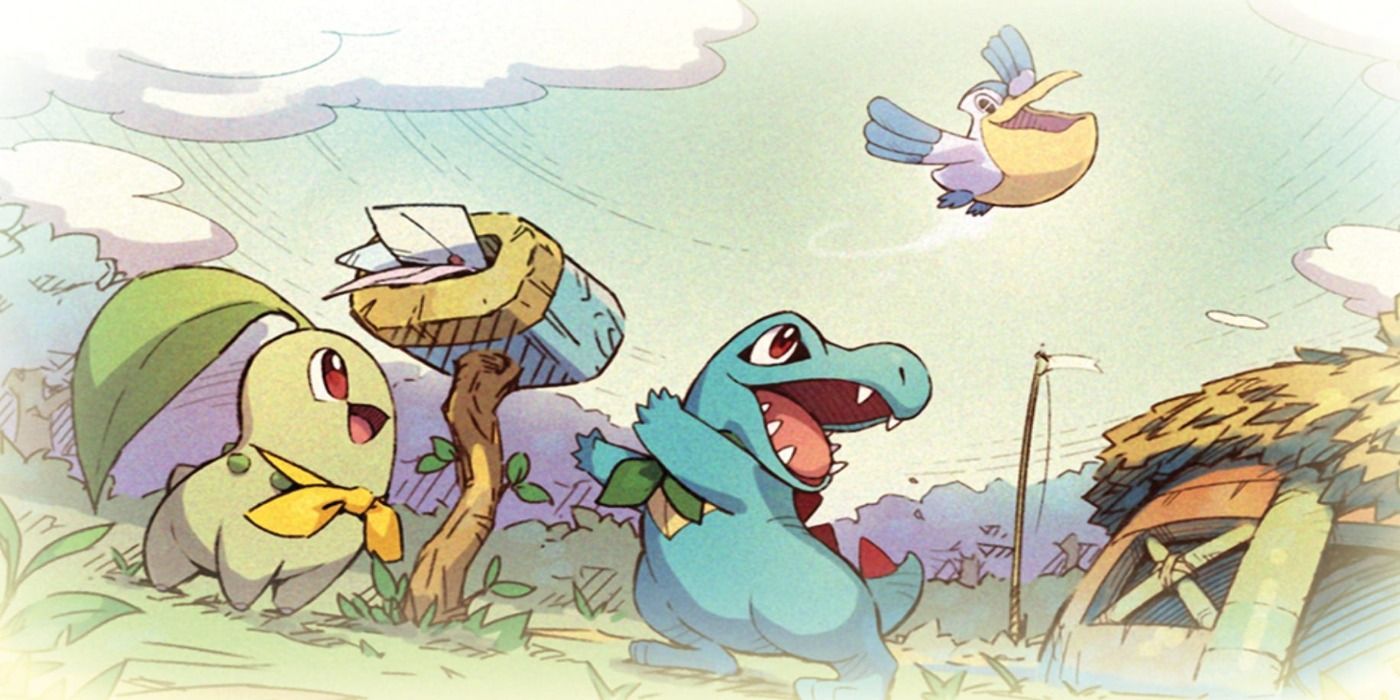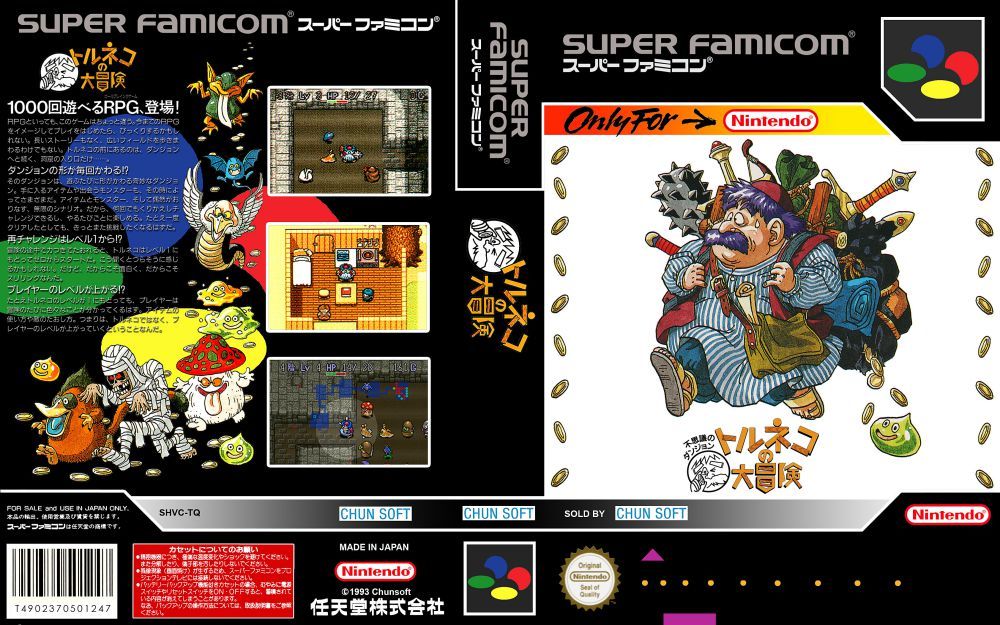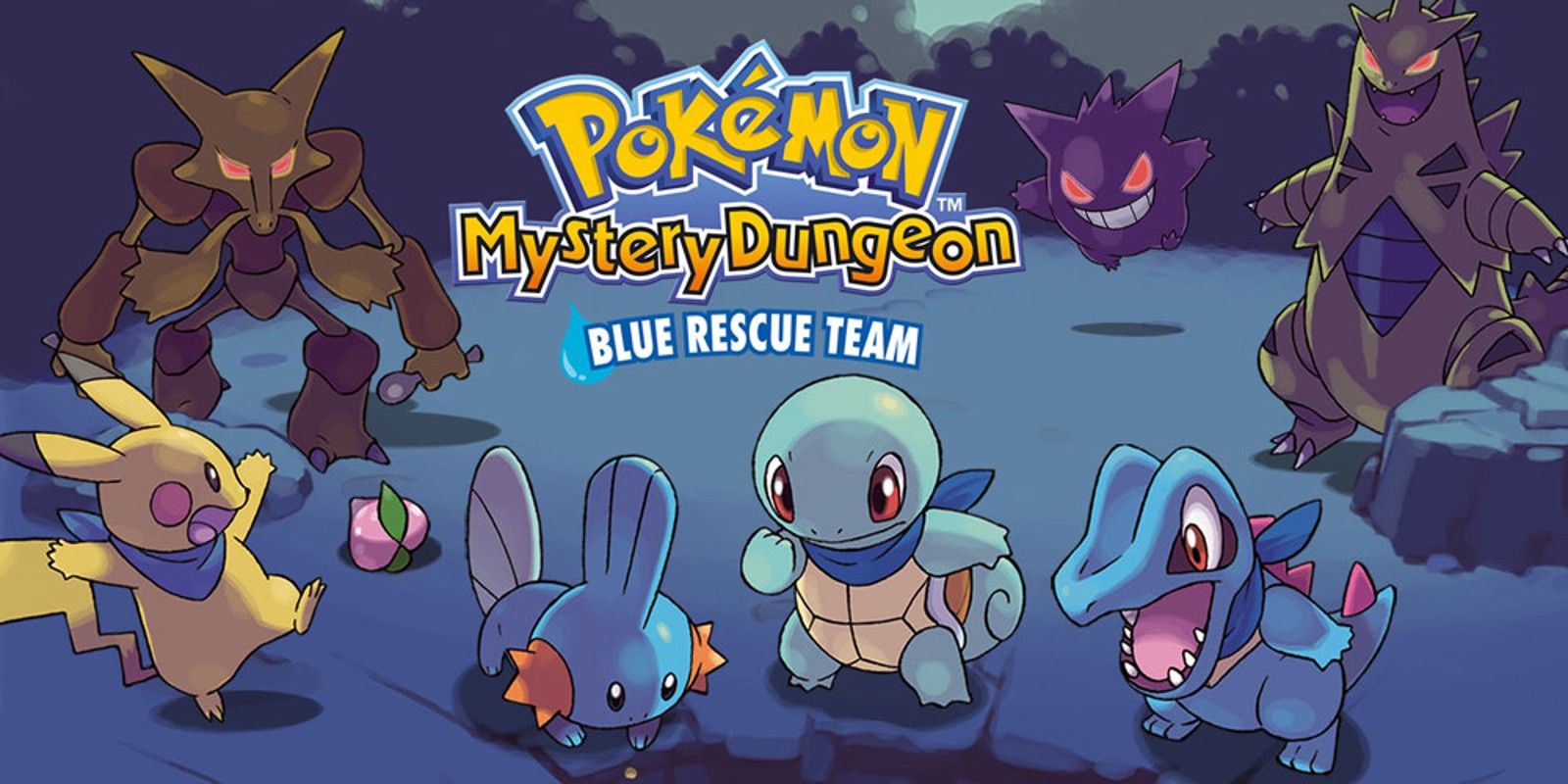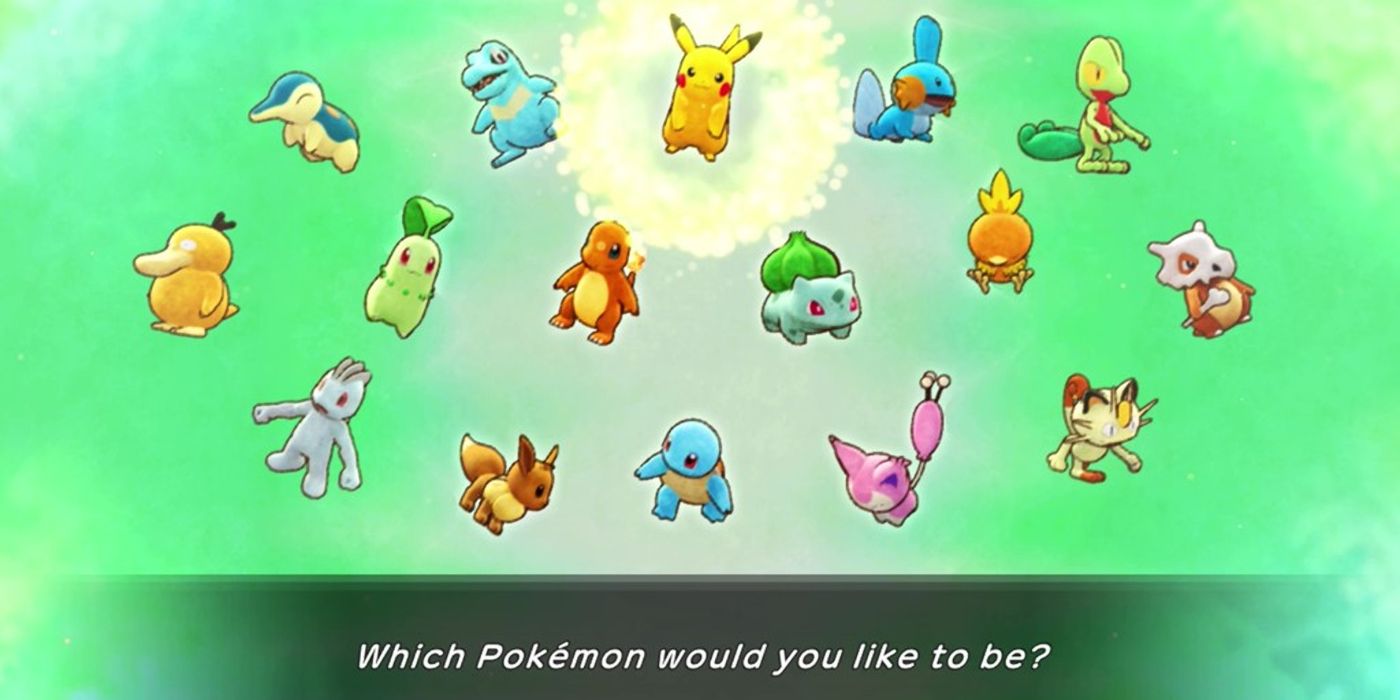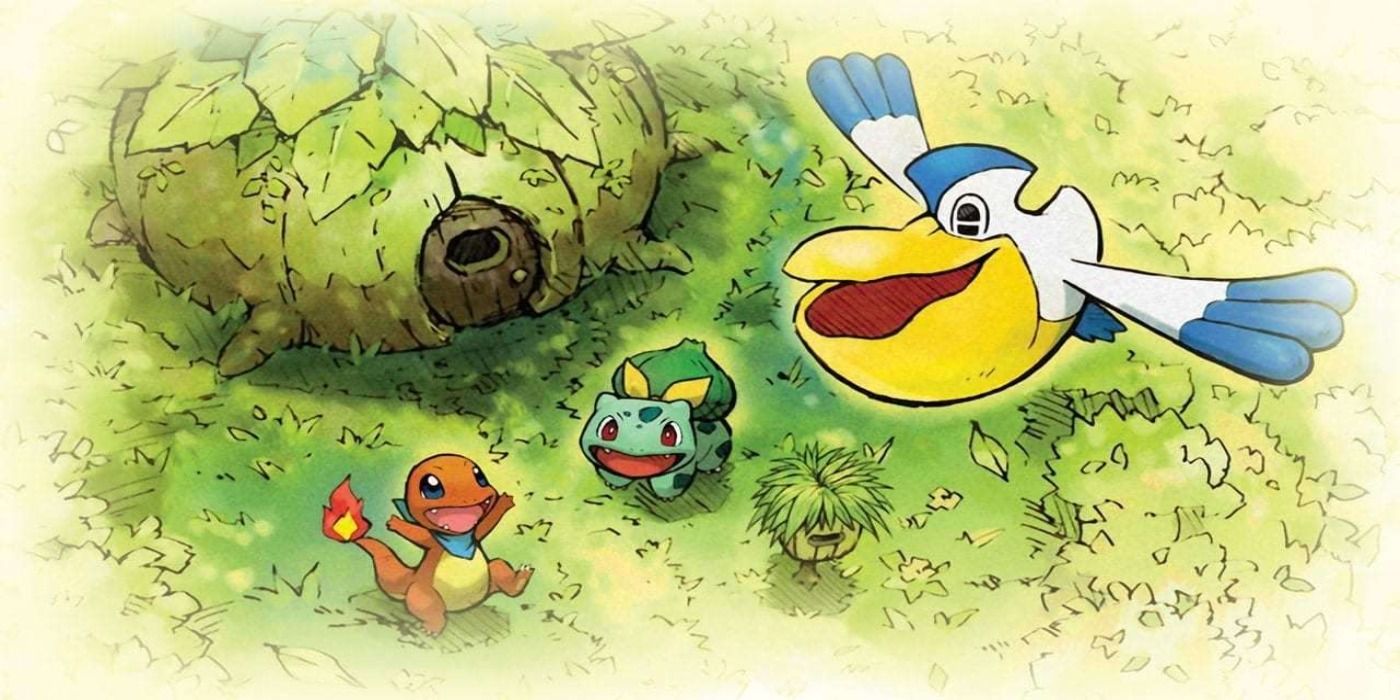The Pokemon franchise has over two decades of history in its wake. Pokemon has been a source of inspiration for other developers all across the industry, even nearly creating its own subgenre of games called Pokemon clones. However, it’s not just the core Pokemon entries that has been inspiring others in the video game landscape, as it has a variety of successful spin-off titles and series. One of the most successful of those spin-off series is the Pokemon Mystery Dungeon series of games.
The Pokemon Mystery Dungeon series first debuted on both the Game Boy Advance and the Nintendo DS simultaneously, with Pokemon Mystery Dungeon: Red Rescue Team and Blue Rescue Team, respectively. Now, with the newly revealed remakes of those titles, Pokemon Mystery Dungeon: Rescue Team DX, the series is once again coming into the spotlight – and for the first time on a home console. This is just the next step in what has been a very interesting history and origins for the spin-offs.
First, let’s take a look at what exactly a Mystery Dungeon game is. The Mystery Dungeon subgenre was conceived by a Koichi Nakamura, best known as the founder of the development and localization company Chunsoft and the co-creator of the Dragon Quest series alongside Yuji Horii. Nakamura developed the first title, the Japanese only Torneko no Daibōken: Fushigi no Dungeon, as the first entry in the Mystery Dungeon subgenre. The game was a rogue-like dungeon crawler inspired by the 1980s game, Rogue. Additionally, the game was set in the Dragon Quest universe, with the main character being the merchant Taloon from Dragon Quest IV.
While the series originally shared a universe with Dragon Quest, the second game in the series, called Mystery Dungeon: Shiren the Wanderer, featured all original characters. Again, this title was a rogue-like dungeon crawler. However, Shiren the Wanderer incentivized players to take on repeated playthroughs in order to improve their items and weapons for their next run. While the Shiren the Wanderer series of games would eventually become its own series of Mystery Dungeon titles, the first game is still known as the second entry in the Mystery Dungeon series.
Finally, the last prominent Mystery Dungeon series developed by Chunsoft was the Chocobo series. Inspired by the Final Fantasy series recurring creature, the Chocobo, the games feature a wide variety of spin-off titles in genres like racing, minigame collections, and of course Mystery Dungeon games based on the bird-like creature. The Chocobo series of Mystery Dungeon games have been around since the late 90s, but only three games in the series have ever been brought to North America and with limited success.
All in all, the first Pokemon Mystery Dungeon game’s formula did not stray too far from the original Japanese titl’s. The gameplay features the main character traveling around heavily randomized dungeons, battling monsters, and collecting items and gold. While the main objective of the first game was to level up the player’s home and shop, the Pokemon Mystery Dungeon games rely on a main narrative that eventually lead to the games conclusion. Like another Pokemon spin-off series, Pokemon Ranger, the Pokemon Mystery Dungeon games have always had main narratives to give context to the gameplay.
As mentioned before, the first games in the Pokemon Mystery Dungeon series were Pokemon Mystery Dungeon: Red Rescue Team and Blue Rescue Team. While Red Rescue Team was released on the Game Boy Advance and Blue Rescue Team was released for the Nintendo DS, the two titles did not differ greatly from each other. Aside from a handful of exclusive Pokemon and some visual adjustments made for the unique layout of the DS, the game’s were nearly identical to one another. While this makes it easier to remake both titles at once, many industry members criticized Blue Rescue Team for not taking full advantage of the DS’s hardware.
Every Pokemon Mystery Dungeon game’s story follows the player character who was originally a human but awakens to find themselves in the body of a Pokemon. The early Pokemon Mystery Dungeon titles started with a personality quiz that would determine what Pokemon the player would play as for the duration of the game. It was a novel idea that allowed players to feel a sense of attachment to the Pokemon they were chosen to be, while being a nice nod to the mainline games use of Pokemon natures. In later games, the quiz became optional or removed altogether in favor of letting players pick their preferred Pokemon.
Red, Blue, and Rescue Team DX focus on Pokemon up to the third generation of the games, specifically from Pokemon Red and Blue to Pokemon Ruby and Sapphire. The story follows the player character and their partner as they form a rescue team in order to help the main character regain their memories of their life as a human. At the same time, the team undertakes missions to help Pokemon suffering from the increasing natural disasters plaguing the land and to seek out the cause of those disasters. While the narrative is somewhat simple and straightforward, it is still a quaint little story that succeeds in giving even more personality to fan favorite Pokemon.
The games following Red and Blue Rescue Team were Pokemon Mystery Dungeon: Explorers of Time, Explorers of Darkness, and a third release called Explorers of Sky. Again, the only core gameplay differences between these versions are a handful of items and Pokemon exclusive to each of the versions, something that has been a tradition in the mainline series of Pokemon games.
Explorers of Time and Darkness heavily improved on the narrative aspect of the previous title, fleshing out both the Pokemon world and the characters who inhabit it. Among many fans, Explorers of Sky is considered the best entry in the Pokemon Mystery Dungeon series for both its gameplay and storytelling. The game even saw a somewhat surprising re-release on the Wii U virtual console, much to many fans' excitement.
Unfortunately, the series would see a slight dip in quality with the first entry released for the Nintendo 3DS, Pokemon Mystery Dungeon: Gates to Infinity. While Gates to Infinity brought the series into 3D and added some interesting tweaks to gameplay mechanics, the overall experience was lacking when compared to the previous entry.
The game’s story was often tedious and slow going, feeling like a Saturday morning children’s cartoon rather than the surprisingly mature narrative offered by the previous entry. Additionally, the number of available Pokemon was heavily limited to only around 144, while the starting Pokemon were limited to five as opposed to previous entries 21.
Thankfully, the following entry was a vast improvement over Gates to Infinity, being Pokémon Super Mystery Dungeon. This title was released two years after Gates to Infinity and rectified many of the issues of its predecessor. Super Mystery Dungeon included all 720 available Pokemon at the time of its release and featured a starting roster of 20 Pokemon. Additionally, the game introduced mechanics like Alliances, Mega Evolutions, and incorporated fairy types into the gameplay. While many would say it's not the best entry in the series, it was still a good step forward.
While the Pokemon Mystery Dungeon series might not be the most well-known or celebrated spin-off series in the Pokemon franchise, it certainly has its own cult following. For good reason, as these titles offer up something that no other Pokemon spin-off series offers. The Mystery Dungeon series offers up an engaging gameplay loop and fleshes out the Pokemon world in an entirely different way than the mainline entries do.
By focusing on the Pokemon themselves, these games give fans a new perspective on the world and the beloved creatures who inhabit it. For Pokemon fans who’ve missed this series, keep an eye out for Pokemon Mystery Dungeon: Rescue Team DX, as it looks to be a promising remake that surely should not be missed.
Pokemon Mystery Dungeon: Rescue Team DX releases March 6 exclusively on Nintendo Switch.

